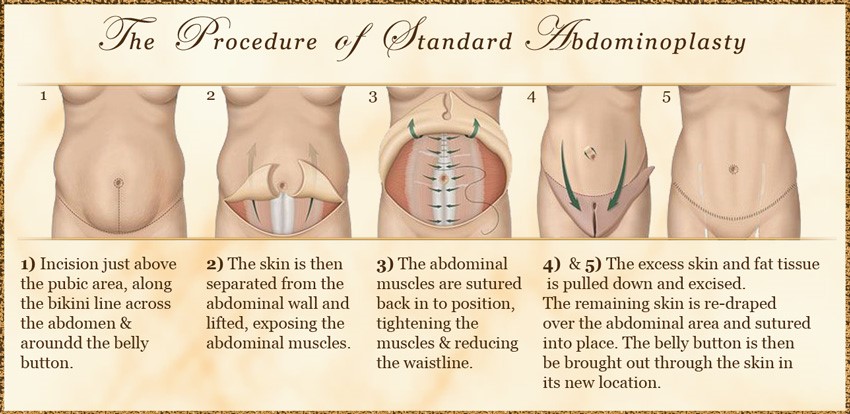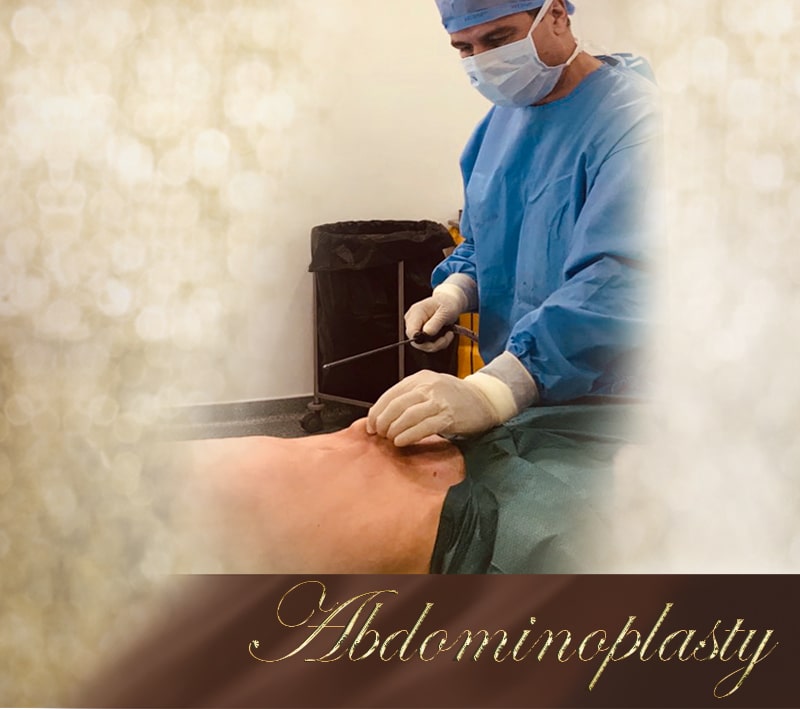Pregnancy, weight loss and the natural ageing process can all cause the abdominal muscles and the skin on the tummy to become weak and loose, which in turn can mean that no amount of exercise will smooth or tighten the area.
Abdominoplasty also known as ‘Tummy Tuck’ surgery, involves the surgical removal of excess skin and fat in the abdominal region. Tummy Tuck is part of the group of ‘body-contouring’ procedures, which also includes Fat Removal (liposuction), Skin-Tightening (arm, thigh and buttock lifts) and Muscle enhancing (calf, buttock and pectoral implants, and abdominal six-pack etching).
Ideal Candidates For Abdominoplasty
Best candidates for Tummy Tuck surgery include individuals with loose abdominal skin and lax abdominal muscles, stretch marks, and/or extra fat build-up which is persistent despite regular exercise and healthy diets.
People who would benefit from abdominoplasty are:
- Women with excess skin and fat following pregnancy, etc.
- Patients with residual folds of skin following significant weight loss.
- Patients with stretch marks following pregnancy or significant weight loss.
- Patients with weak abdominal wall muscles following significant weight loss, pregnancy, etc.
- Those with realistic expectations who are in good health.
What To Consider At This Stage
Before you see Mr Rezai, it is important to consider exactly what you are trying to achieve from your surgery. In particular, you must understand that Abdominoplasty surgery is most definitely not a treatment for weight loss or obesity.
Abdominoplasty – Technical Variations
Procedures used to reshape the abdomen include liposuction, mini-abdominoplasty (also includes apronectomy), standard abdominoplasty, extended abdominoplasty and flankoplasty.

Mini-Abdominoplasty also known as mini-tuck,
- Excess skin and fat above the pubic bone are removed.
- The Abdominal muscles below the belly button (umbilicus) can also be tightened if needed.
- The belly button remains intact.
- The procedure is performed under general anaesthesia, takes sixty to ninety minutes, and is occasionally done as a day case. However, most patients stay in hospital overnight.
Apronectomy (a form of mini-abdominoplasty)
- Involves removal of larger excess skin and fat (the apron) hanging down over the pubic area and genitals.
- The belly button remains intact.
- The procedure is performed under general anaesthesia and may take up to two hours. Patients stay in hospital overnight.
Standard Abdominoplasty
- Excess skin and fat between the pubic bone and belly button is removed and the abdominal muscles are tightened.
- This leaves the belly button itself in place. However, in pulling the skin at the level of the umbilicus down to the pubic level, the umbilicus must be brought through the new skin lying over it. Consequently, this form of tuck results in a long curved scar at the pubic level, along with a circular scar around the umbilicus.
- The procedure is performed under general anaesthesia and may take up to three hours. Drains may be used, and patients remain in hospital for at least one night.

Extended Abdominoplasty
- This is a more radical extensive procedure than standard abdominoplasty.
- The incision is continued around the waist and onto the back.
- Excess skin and fat are removed from this wider area around the flanks, resulting in a longer scar.
- As with the standard abdominoplasty, the umbilicus must be brought through the skin, resulting in a scar around it.
- The procedure is again performed under general anaesthesia, and may take between three to five hours to perform, especially as the patient has to be turned during surgery. Patients remain in hospital for at least one night.
All the above procedures can be combined with Muscle Plication, in which the muscles over the abdominal wall are sutured back in to position, tightening the muscles, flattening the tummy and reducing the waistline.

















